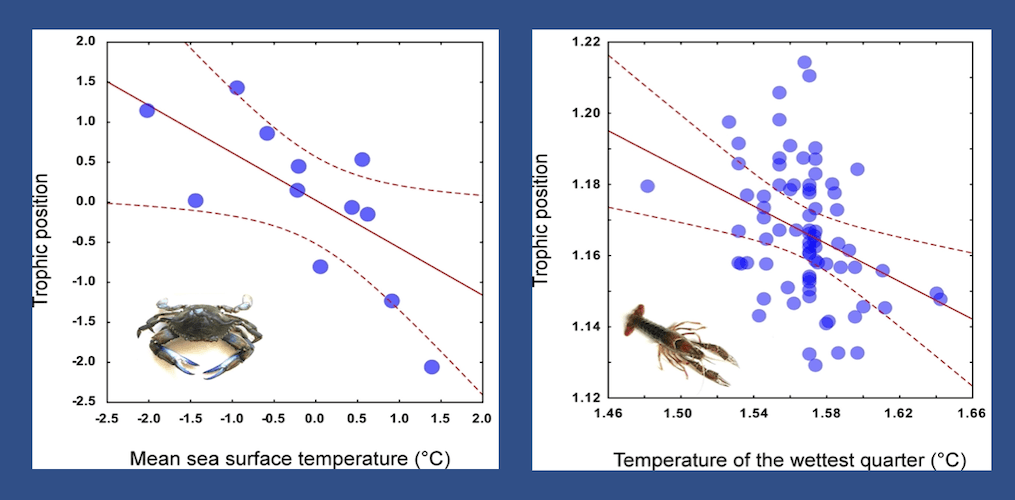
A scientific paper about the LifeWatch ERIC Crustaceans Workflow was published on 4 January 2023 in Frontiers on Environmental Science, the community-driven and peer-reviewed research journals dedicated to making science open, so that scientists can collaborate better and innovate faster to deliver solutions that enable healthy lives on a healthy planet.
LifeWatch ERIC, the e-Science European infrastructure for biodiversity and ecosystem research, launched the Internal Joint Initiative in October 2019 on Non-indigenous Species and Invasive Alien Species (NIS-IAS) because they are considered one of the major drivers of biodiversity and ecosystem change. In this paper, the case study on the trophic biogeography of invasive crustaceans is presented, describing the procedures, resources, and analytical web services implemented in the Tesseract Virtual Research Environment to investigate the trophic habits of two invasive taxa by using carbon and nitrogen stable isotope data. The case study offers a number of analytical tools to determine the variability of the trophic position of invasive crustaceans in a spatially-explicit context and to model it as a function of relevant environmental predictors.
Literature-based stable isotope data of the Atlantic blue crab Callinectes sapidus and the Louisiana crayfish Procambarus clarkii were used to evaluate the functionalities and outcomes of the workflow. The results of the study reveal, both at population-scale and individual-scale, the existence of significant relationships between temperature related variables and the trophic positions of the two species. At relatively higher temperatures, omnivorous invaders occupy higher trophic levels in food webs and become more carnivorous, which in conditions of climate change is likely to increase their overall impact.
Moreover, the functionalities of the Crustacean Workflow within the Tesseract VRE offered by LifeWatch ERIC can be adapted to a wide range of species, and will be further improved to support researchers in monitoring and predicting trophic-related impacts of NIS-IAS. The VRE will also support policymakers and stakeholders in the implementation of effective management and control measures to limit the negative effects of bioinvaders in recipient environments.
Read or download the whole paper here (Di Muri et al).
Click here for links to two related papers:
“An individual based-based dataset of carbon and nitrogen isotopic data of Callinectes sapidus in invaded Mediterranean waters“
“Individual and population-scale carbon and nitrogen isotopic values of Procambarus clarkii in invaded freshwater systems“